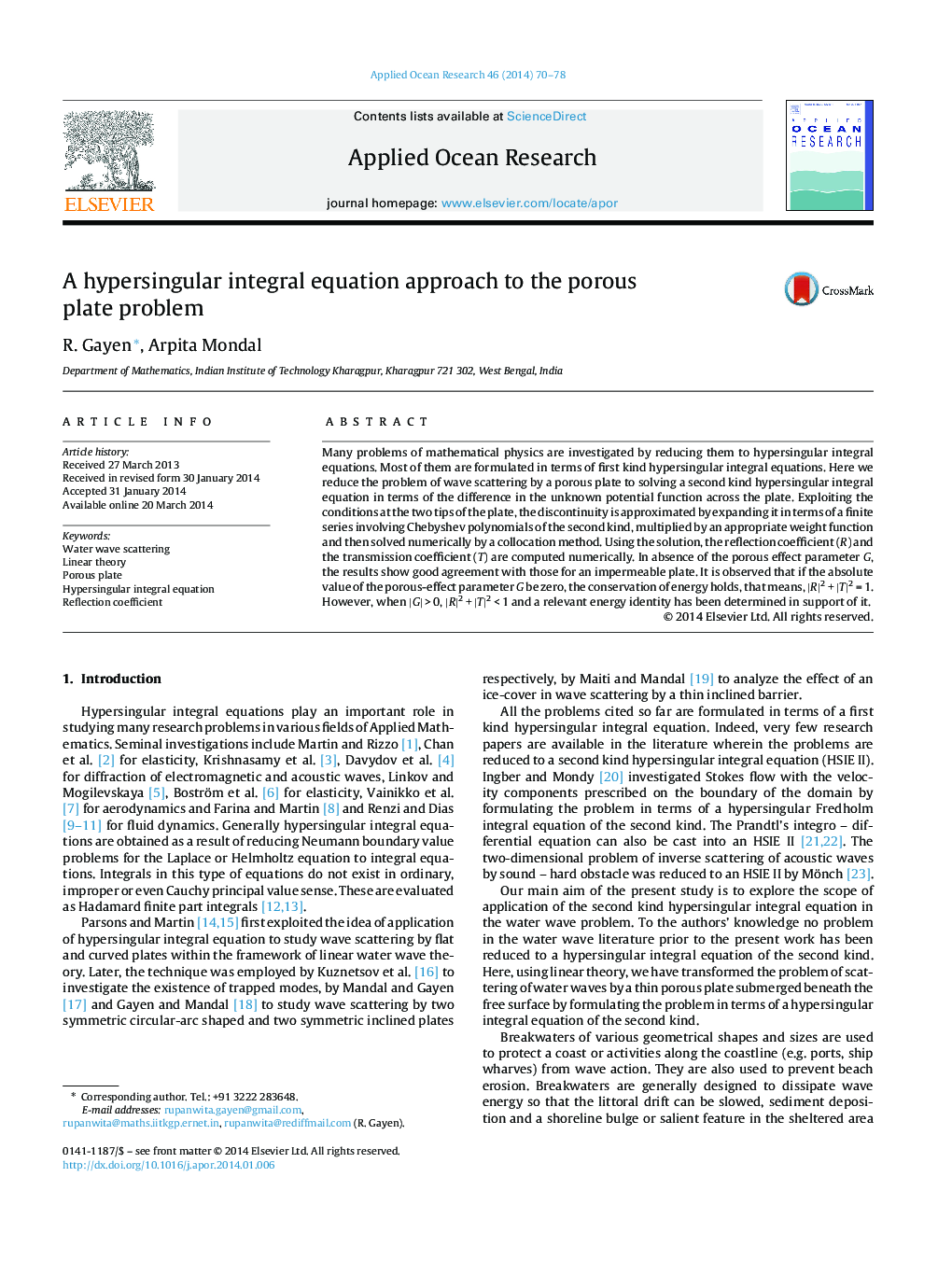| Article ID | Journal | Published Year | Pages | File Type |
|---|---|---|---|---|
| 1720081 | Applied Ocean Research | 2014 | 9 Pages |
•The problem of wave scattering by a porous plate is considered.•The problem is reduced to a second kind hypersingular integral equation.•The integral equation is solved using the edge conditions.•An energy identity is derived which establishes the reason behind the energy dissipation by a porous plate.
Many problems of mathematical physics are investigated by reducing them to hypersingular integral equations. Most of them are formulated in terms of first kind hypersingular integral equations. Here we reduce the problem of wave scattering by a porous plate to solving a second kind hypersingular integral equation in terms of the difference in the unknown potential function across the plate. Exploiting the conditions at the two tips of the plate, the discontinuity is approximated by expanding it in terms of a finite series involving Chebyshev polynomials of the second kind, multiplied by an appropriate weight function and then solved numerically by a collocation method. Using the solution, the reflection coefficient (R) and the transmission coefficient (T) are computed numerically. In absence of the porous effect parameter G, the results show good agreement with those for an impermeable plate. It is observed that if the absolute value of the porous-effect parameter G be zero, the conservation of energy holds, that means, |R|2 + |T|2 = 1. However, when |G| > 0, |R|2 + |T|2 < 1 and a relevant energy identity has been determined in support of it.
